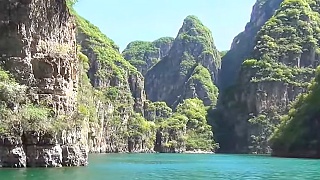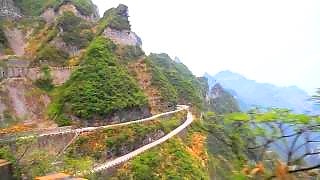
|
With GoYvon ...
LongQing Xia (龙庆峡) Visitor Guide - BeiJing
Overview
LongQing Xia, also known as the LongQing Gorge or Dragon Celebration Gorge, is a stunning scenic area located in the YanQing District of BeiJing, China. Famous for its breathtaking natural scenery, clear waters, and dramatic cliffs, LongQing Xia is a popular destination for both locals and tourists seeking a peaceful retreat from the bustling city.
Getting There
Location: YanQing District, BeiJing, China.
Public Transport:
By Bus: Take Bus 919 or 880 from Deshengmen Bus Station to YanQing. From YanQing, transfer to Bus 875 to LongQing Xia.
By Train: Take the S2 train from Huangtudian Railway Station to YanQing Station. From there, take a taxi or local bus to LongQing Xia.
Opening Hours
April to October: 7:30 AM to 4:30 PM
November to March: 8:00 AM to 5:00 PM
Tickets
Entrance Fee: ¥40
Boat Ride: ¥100 (optional)
Discounted Ticket (for children, students, and seniors): ¥20
Main Attractions
LongQing Xia offers a variety of attractions for visitors to explore:
Ice Lantern Festival: Held every winter, the festival features beautiful ice sculptures and colorful lanterns, creating a magical winter wonderland.
LongQing Gorge: The main attraction, this gorge offers stunning views of the cliffs and clear waters, best experienced by boat.
Bailong Cave: A cave with impressive stalactites and stalagmites, offering a cool retreat during the summer months.
Jiguanshan Great Wall: A lesser-known section of the Great Wall, offering a historical and scenic hike.
Rainbow Bridge: A picturesque bridge offering great photo opportunities and scenic views of the gorge.
Activities
Visitors can engage in various activities at LongQing Xia:
Boat Rides: Take a boat ride through the gorge to fully appreciate the stunning scenery.
Bungee Jumping: For the adventurous, there is a bungee jumping platform offering a thrilling experience.
Hiking: Explore the trails around the gorge and the Great Wall for a more active visit.
Photography: Capture the beautiful landscapes and unique features of the area.
Ice Sculptures (winter): Visit during the winter months to see the incredible ice sculptures of the Ice Lantern Festival.
Dining and Refreshments
Several restaurants and snack stalls are available around LongQing Xia, offering a variety of Chinese cuisine and refreshments. It is also advisable to bring your own snacks and water, especially if you plan on hiking or exploring for an extended period.
Visitor Tips
Best Time to Visit: Spring and autumn are the best times to visit due to the pleasant weather and beautiful scenery. Winter is also popular for the Ice Lantern Festival.
Wear Comfortable Shoes: The area has many trails and uneven terrain, so comfortable walking shoes are recommended.
Stay Hydrated: Bring plenty of water, especially if you plan on hiking.
Prepare for Weather: Bring a raincoat or umbrella during the rainy season, and dress in layers for temperature changes.
Respect Nature: Follow park rules, stay on designated paths, and do not disturb the wildlife.
Nearby Attractions
Badaling Great Wall: One of the most famous sections of the Great Wall, located nearby and offering a great historical experience.
Yudu Mountain: A beautiful mountain area offering hiking trails and stunning views.
Kangxi Grassland: A vast grassland ideal for horse riding, picnicking, and enjoying the natural scenery.
Conclusion
LongQing Xia (龙庆峡) in BeiJing is a breathtaking natural destination that offers a mix of stunning landscapes, adventurous activities, and cultural experiences. Whether you're a nature enthusiast, thrill-seeker, or simply looking for a peaceful retreat, LongQing Xia provides an unforgettable experience.
|

 YiWu 义乌, ZheJiang province – the world’s largest wholesale market
YiWu 义乌, ZheJiang province – the world’s largest wholesale market
 YiWu 义乌, ZheJiang province – the world’s largest wholesale market
YiWu 义乌, ZheJiang province – the world’s largest wholesale market







